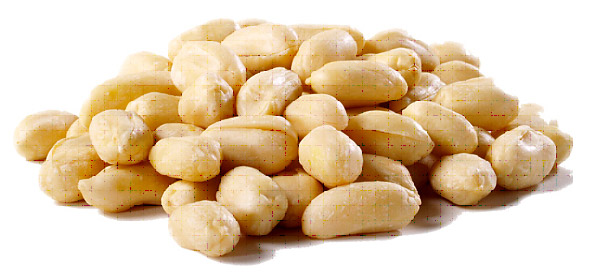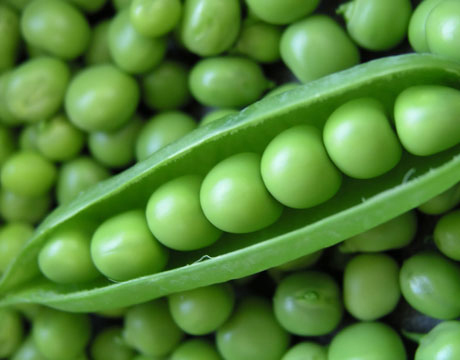Do You Really Have Food Allergies?
By Ginny Chandoha, August 31, 2015
When I was a child growing up in the 1950’s, everyone ate peanut butter and jelly sandwiches. Nut and gluten allergies were unheard of. Is it merely hybridization that these crops (wheat, oats, barley, peanuts, sugar cane, and even legumes) have become allergens, or is it something else that has turned them into toxins?
Gluten intolerance, along with a gamut of intestinal illnesses including Crohn’s Disease, Celiac Disease, Irritable Bowel Disease (IBD), as well as numerous other food allergies have also become prominent. These disorders used to be rare to unheard of, but no they strike people at younger and younger ages, including teens and youths.
Nature fine-tuned plants over millennium, and we evolved consuming them. So how have gluten and other grains been consumed for centuries without disease, but intolerance, “grain brain,” leaky gut, and other disorders have risen in disproportionate levels within the last 20-30 years?
One theory is that we tend to eat grains in a highly processed form, rather than as a whole food. And we consume this processed form numerous times per day, every day. Paracelsus, the Father of Toxicology said, “The poison is in the dose.”
Another theory is that hybridization has changed the makeup of wheat. By hybridizing plants, the bound molecular structures can be separated, allowing natural toxic elements that nature kept in check and in the background to become prominent.
Several studies have traced the correlation between the rise in intestinal diseases to the increase in genetically engineered crops, which have been modified to withstand being drenched with herbicides, specifically glyphosate. And yet some people avoid genetically modified foods and still suffer these intestinal disorders, and crops that have not been genetically modified (wheat, barley, oats, peanuts/nuts) also trigger allergic reactions.
I’m going to play the devil’s advocate here and say that perhaps the blame for these disorders has been misplaced, and it is not nuts, gluten, or grains per se, but how these plants are harvested.
Prior to the 1980’s, farming never needed an “organic” designation because that was the traditional and only way farming was done since humans stopped foraging and began growing their own food. Only within the last 50-60 years has monoculture farming and the introduction of the heavy use of pesticides and herbicides displaced and replaced traditional organic farming.
Traditional farming meant weeding, harvesting, sorting, and sifting crops by hand. Complimentary crops and yearly crop rotation naturally reduced pests, and cover crops were used to rejuvenate resting fields.
In contrast, the majority of our food today is monoculturally farmed, meaning that only one crop is continuously planted in the same location year after year, and synthetic chemical fertilizers, pesticides, and herbicides are used. Harvesting crops is not done by hand, but by machine and chemical.
Non-organic farms don’t invest the money or time to harvest crops the traditional way. Rather than allowing crops to mature and the foliage to naturally wither before harvesting, instead the foliage is heavily sprayed with an herbicide to speed up the harvesting process.
 This type of harvesting is called dessication, and it is used on crops that have not been genetically modified, including wheat, peanuts, sugar cane, barley, peas, oats, canola, flax, and legumes. Crops that have been dessicated prior to harvest are forced to release more seeds.
This type of harvesting is called dessication, and it is used on crops that have not been genetically modified, including wheat, peanuts, sugar cane, barley, peas, oats, canola, flax, and legumes. Crops that have been dessicated prior to harvest are forced to release more seeds.
The key ingredient in the dessicating herbicide is glyphosate, and it operates by binding with pathogenic ground bacteria to prevent plant illnesses. However, it also binds with beneficial bacteria needed by plant roots for optimum uptake of nutrients from the soil. Comparison studies between organic crops, and crops subjected to glyphosate show startling differences in nutrient levels. For example, in organic crops the uptake and dispersion of manganese and iron throughout the plant is 100%, while in crops subjected to glyphosate, manganese is less than 20% and iron only 50%.
When we eat dessicated crops, not only are we deprived of micronutrients needed for optimum health, we are also eating glyphosate residue. The maker of this chemical claims that it is harmless to humans and other animals because of the way the herbicide works by using the shikimate pathway to bind with the soil bacteria that kills unwanted plants. Theoretically, mammals do not possess the shikimate pathway.
But we do possess bacteria which does contain the shikimate pathway. We carry 25 pounds of beneficial bacteria on our skin and throughout our entire intestinal tract. Glyphosate does not differentiate between beneficial and pathogenic bacteria and consumption of glyphosate residue destroys our intestinal flora, which in turn obstructs our body’s ability to absorb nutrients.
In addition, we have gene encoding cytochrome P450 (CYP) enzymes that are crucial in the formation and breakdown of various digestive molecules and chemical reactions. These play a huge role in the digestion of the molecular structure of wheat and other grains. A recent study shows that glyphosate suppresses CYP enzyme activity in plants and animals, and most likely us.
In side-by-side comparisons, non-genetically modified, monoculturally grown crops that have been harvested through desiccation show alarming levels of glyphosate residue, nearing or exceeding the USFDA’s “acceptable” levels. The same crops grown organically show zero glyphosate contamination.
In 2011, North Dakota’s State Seed Department Deputy Commissioner warned farmers not to use glyphosate to harvest crops. According to the Deputy Commissioner, testing showed that 98% of desiccated field peas were abnormal and “would not produce a viable, productive plant because they are lacking essential plant parts.” The Association of Official Seed Analysts (AOSA) Training Manual defines an abnormal seedling as one that does not have all of the essential structural plant parts or is damaged, deformed or decayed to such an extent that normal development is prevented.
The biotech industry and the USFDA claim that glyphosate is safe, and in late 2013 the USFDA’s “acceptable level” of glyphosate ingested by humans was doubled from 20 parts per million to 40 parts per million. Interestingly enough, the warning label on a container of glyphosate herbicide states that it is poisonous if swallowed, and to keep it away from water sources, animal feed, foodstuffs, and to avoid spilling it into ponds, lakes, and rivers.
Regardless of whether or not glyphosate residue levels in the foods we eat are “acceptable,” or that we supposedly don’t have the shikimate pathway, the fact remains that every time we eat non-organic crops, we are ingesting unacceptable levels of chemcial residues.
However, the news is not all gloom and doom. The human body has an enormous capacity to heal itself given the right environment. Studies reveal that people who switch to an all-organic diet will reduce 95% of pesticide residues in their blood and urine within two weeks, and while I’ve not come across specific studies regarding glyphosate herbicide reduction by switching to an all-organic diet, one might draw a similar conclusion.
